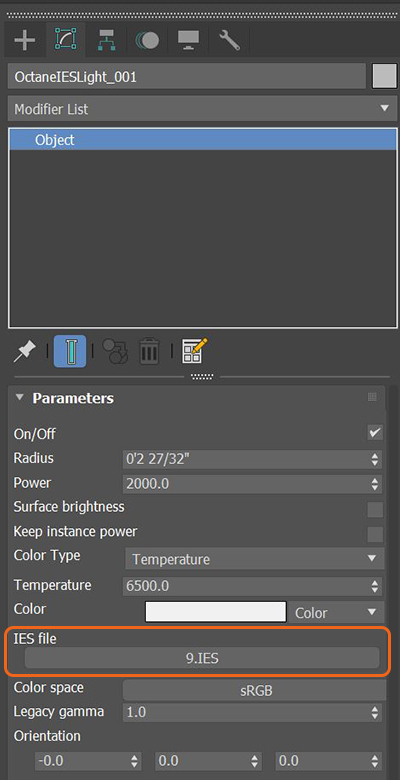
The IESAn IES light is the lighting information representing the real-world lighting values for specific light fixtures. For more information, visit http://www.ies.org/lighting/. texture uses an IES profile as an illumination source. IES profiles can be added to light emitting geometry using the Black BodyAn opaque object that emits thermal radiation. In Octane, this is used to designate illumination properties for mesh emitters. and Texture emission nodes or to an Octane light using the Distribution input. There is also an Octane-specific IES Light available in the Octane light category of the Command panel.
An IES profile can be added to an Octane Light using the Distribution input (figure 1).

Figure 1: Adding an IES light profile to an Octane light
The IES Texture can be added to a geometry object as well. Create a plane object and connect an Octane DiffuseAmount of diffusion, or the reflection of light photons at different angles from an uneven or granular surface. Used for dull, non-reflecting materials or mesh emitters. material to the plane. The IES Texture node can be added to the Distribution input on both a Black Body & Texture emission node (figure 2).

Figure 2: The Emission Switch node is used to connect both a Black Body & a Texture emission node to the Emission input on a Diffuse materialUsed for dull, non-reflecting materials or mesh emitters.
The IES-specific Octane light has an input for an IES light profile to be added (figure 2). This input does not require the use of the IES Texture node.

Figure 3: Adding an IES light profile to the IES-specific Octane light